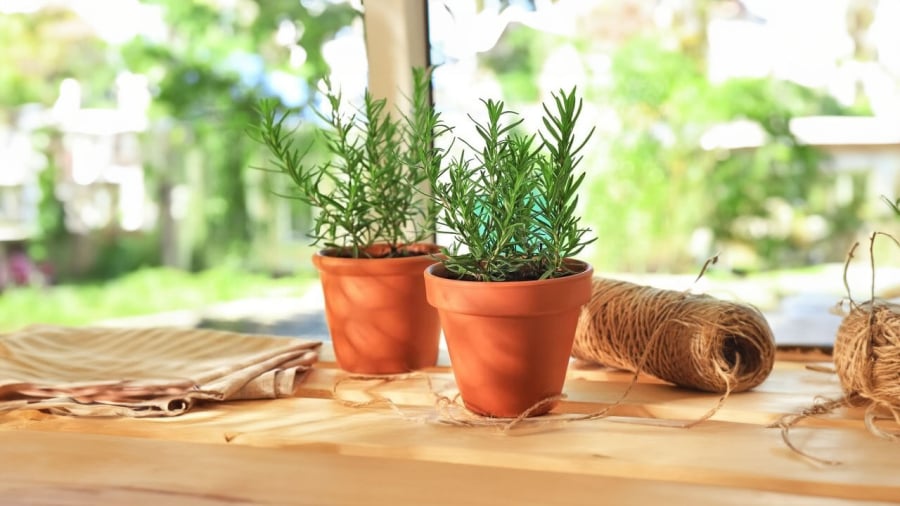Thyme is a type of spice imported from Europe to Vietnam. This is a spice used in some European-style dishes and can be used to make fragrant tea with many health benefits. Thyme is suitable for tropical climates, so it thrives in Vietnam. Because thyme is a fragrant plant, it is chosen by many families and offices for decoration. Thyme also helps repel mosquitoes and insects very well.

Thyme has a bitter, slightly hot taste with a fragrant aroma and a lot of essential oils with antioxidant properties, stimulates digestion, so it is applied in the treatment of digestive disorders, stomach pain. Thyme also helps reduce headaches thanks to its fragrant essential oils with the ability to increase blood circulation and clear toxins. Thyme also has antibacterial properties, so thyme water can treat wounds.
Thyme helps alleviate stress, fight against sleepiness, and improve brain function.
Thyme is commonly used in some dishes to create fragrance and eliminate unpleasant odors.
The feng shui significance of thyme
Ancient people believed that thyme is a symbol of loyalty and has the ability to connect between two worlds. Thyme has the ability to repel evil spirits, bring luck and peace to the homeowner. Thyme is believed to be a plant that does not clash with any fate, but people of the Wood and Fire fate planting this plant is very good and enjoys many benefits.
Growing thyme by cutting is very easy
From an initial thyme pot, you can quickly propagate many other thyme pots by the method of cutting.

– Choose branches: Choose old thyme branches, cut a section about 10-15 cm long, the survival rate of the branches will be about 70 – 90%. Trim the leaves below, leaving only a few leaves on top
– Cutting branches: Stick the thyme branches into cold water (make sure the water does not flood the leaves to avoid soaking). Then place this branch vase in a cool place with light. After about 2-3 weeks, the thyme will develop roots, then plant it in a pot of soil.
– Planting soil: Thyme has sensitive roots and requires good water drainage, so thyme is suitable for loose, warm, and nutrient-rich soil. You can plant multiple branches in one pot. With one initial thyme plant, you can quickly create many thyme pots using this cutting technique.

Caring for thyme after planting
– Light: Place the thyme pot in a place with light but not direct sunlight. Thyme only needs gentle morning sun to photosynthesize and create a green color, and then keep the plant in a place with scattered light like a window, balcony with little sun.
– Watering: Thyme is easy to grow, so you only need to water it in the morning, avoid watering too often. If in the dry season in the North, the soil is dry, you can water it in the afternoon. When the newly planted plant is young, you should use a gentle spray bottle to avoid disturbing the plant roots. Thyme cannot withstand waterlogging, so you need to pay attention to the amount of water used for watering the plant.
– Fertilizer: You should evenly fertilize the plant every week with a small amount. Soak a coffee spoon of purple NPK fertilizer (15-5-20-3.5 TE) in 1 liter of water for about 12 hours to dissolve the fertilizer, then water it evenly under the plant base in the cool evening. Occasionally, you can change it with Super Orchid fertilizer, Dynamic Lifter granules with a similar soaking dosage. In addition, use leaf fertilizers such as B1 and NPK fertilizers to fertilize the plant.

– Disease prevention: Thyme is susceptible to worms and snails, so if you see a blanket clinging to the trunk, the leaves turn silver, and black spots appear, you should spray pesticides to treat the plant. You should use household mosquito spray to spray the plant pot to ensure safety. You can also use mosquito repellent essential oils to treat insects by placing a bottle of wind dầu inside the plant base to help treat insects for thyme.
Information is for reference purposes only




































